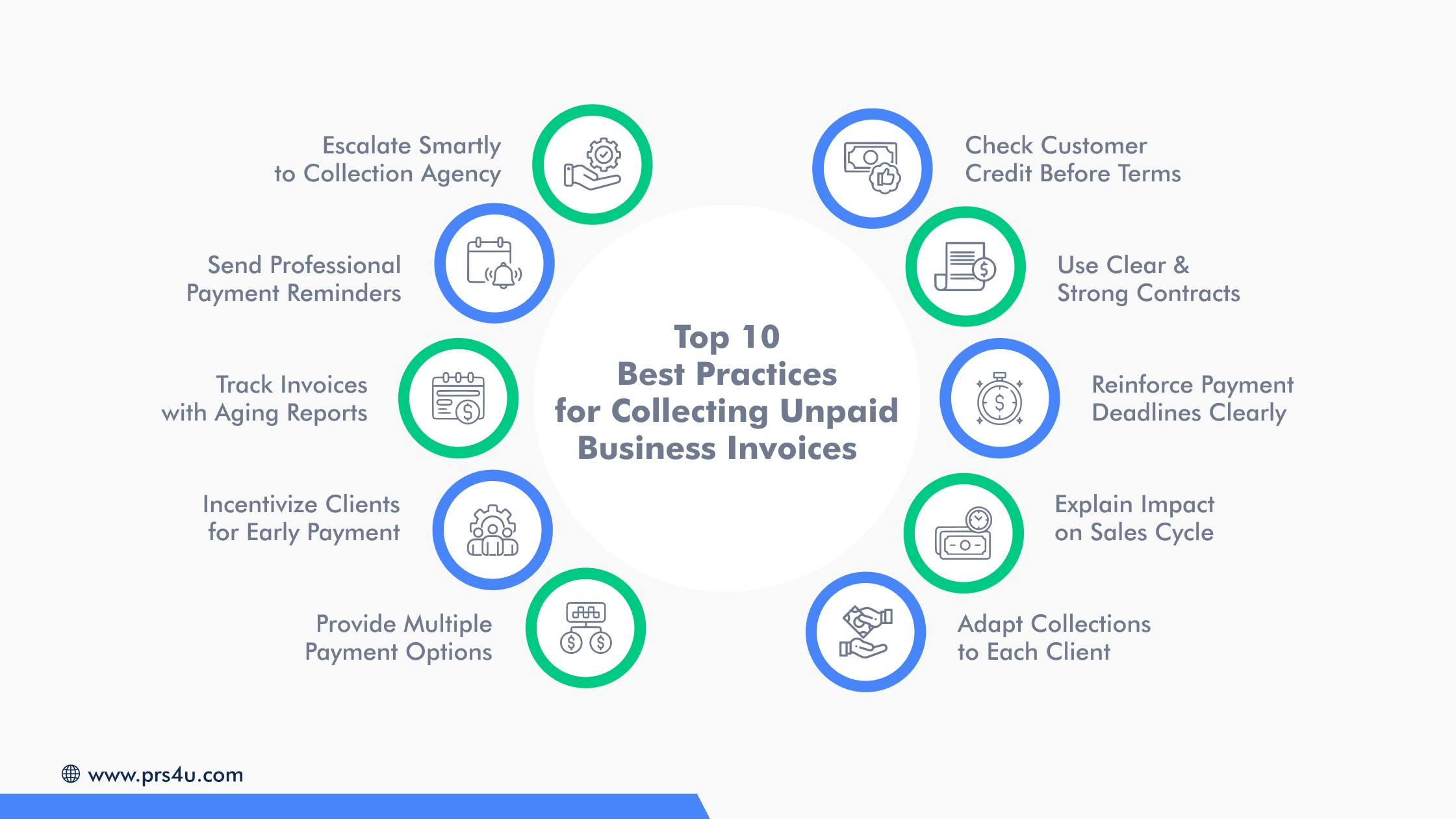How to Collect Unpaid Business Invoices with 10 Proven Practices
Research shows that 33% of all B2B invoices in the U.S. remain unpaid after their due date, with many dragging on 90 days or longer. You may be one of these companies, still waiting, still chasing, while cash flow stalls. Every overdue invoice means disruption: strained supplier relationships, missed payroll flexibility, and hours lost on calls and reminders instead of growth.
Chasing unpaid invoices often means long phone calls, endless email reminders, and distracted teams, which can be better spent on core work in terms of time and energy. The longer payments sit unpaid, the more working capital gets tied up, and the harder it becomes to keep your business moving forward. Acting quickly is crucial to safeguard your financial well-being.
In this blog, we’ll walk through the 10 best practices for collecting unpaid business invoices. You’ll learn strategies that protect your relationships, expedite payments, and help your business maintain financial stability.
How Do Unpaid Invoices Affect Your Business?
On the surface, an unpaid invoice is a simple delay in cash flow. However, upon closer examination, the ripple effects extend much further. Outstanding receivables silently drain resources, create financial uncertainty, and can even hinder your ability to grow.
Here are some of the most common hidden costs that pile up when invoices go unpaid:
- Cash flow strain: Delayed payments restrict working capital, making it harder to cover payroll, overhead, and supplier obligations.
- Increased borrowing: Businesses often turn to credit lines or loans to fill gaps, leading to extra interest and fees.
- Lost productivity: Staff spend hours chasing overdue invoices instead of focusing on core operations.
- Customer relationship tension: Chasing payments can sour long-term partnerships if not handled carefully.
- Missed opportunities: Limited cash flow prevents reinvestment in growth initiatives, new equipment, or talent.
Top 10 Best Practices for Collecting Unpaid Business Invoices
 Tackling unpaid invoices requires a combination of consistency, professionalism, and a strategic approach. Businesses that rely only on reminders often face repeated delays, while those with clear processes in place see faster recoveries and healthier client relationships. The following best practices can help you streamline collections and protect your bottom line.
Tackling unpaid invoices requires a combination of consistency, professionalism, and a strategic approach. Businesses that rely only on reminders often face repeated delays, while those with clear processes in place see faster recoveries and healthier client relationships. The following best practices can help you streamline collections and protect your bottom line.
1. Check Customer Credit Before Terms
One of the smartest ways to reduce unpaid invoices is to assess a client’s financial reliability before agreeing to work with them. A simple credit check, trade reference, or review of payment history with other vendors can reveal valuable insights into their ability to meet obligations.
Helpful evaluation methods include:
- Targeted business surveys for customer insights
- Access to financial databases with up-to-date company records
- Feedback from sales teams or trusted partners
This proactive step helps you spot risks early and decide whether to adjust terms, request deposits, or decline the contract. While cautious, assessing creditworthiness upfront safeguards cash flow and shows you take financial commitments seriously.
2. Use Clear & Strong Contracts
Ambiguity in contracts often causes delayed or disputed payments. To avoid this, every agreement should include clear conditions covering payment terms, deadlines, penalties for late payment, and accepted methods.
Clauses on dispute resolution and collection procedures also set expectations if issues arise. With specific, transparent contracts, clients are less likely to miss obligations, and you have a solid foundation should enforcement be needed.
Strong general conditions both protect your business and demonstrate professionalism, supporting smoother client relationships.
3. Reinforce Payment Deadlines Clearly
Sometimes, late payments aren’t due to unwillingness but to a lack of awareness or poor prioritization. Reinforcing the importance of deadlines can make a significant difference. Regularly remind clients of due dates through invoices, email reminders, or even automated notifications.
Framing timely payments as a mutual benefit helps you maintain service quality while supporting their continued access to products or services, creating a sense of shared responsibility.
It also helps to communicate payment terms upfront during onboarding or contract discussions. When deadlines are emphasized early and consistently, clients are less likely to treat them as flexible. Clear and polite communication reduces the risk of misunderstandings and demonstrates that your business takes financial discipline seriously.
4. Explain Impact on Sales Cycle
Late payments can disrupt your cash flow and the entire rhythm of your business. When customers understand how their payment behavior directly affects your operations, they’re more likely to respect deadlines.
Explaining your sales cycle provides them with visibility into the broader impact, demonstrating that timely payments ensure smoother service, product availability, and ongoing support.
Practical ways to highlight this include:
- Share how delays affect inventory or service delivery timelines.
- Provide a simple breakdown of your order-to-cash cycle to show transparency.
- Use client meetings or onboarding sessions to explain how payment discipline keeps partnerships strong.
- Highlight positive client examples where on-time payments supported faster deliveries or better terms.
By connecting their actions with real outcomes, you encourage accountability and foster stronger, more cooperative business relationships.
5. Adapt Collections to Each Client
Not all customers are alike, and neither should your approach to collections be. A rigid, one-size-fits-all strategy can create friction, while a thoughtful, customized plan increases the likelihood of recovery and preserves the business relationship. The key is to segment clients by risk profile, payment history, and strategic importance, then apply collection methods that fit their behavior.
Practical ways to adapt strategies include:
- Gentle reminders for reliable clients who occasionally miss deadlines, keeping the tone supportive.
- Structured follow-up schedules for clients with recurring delays, ensuring consistent touchpoints.
- Flexible arrangements, such as payment plans for those facing temporary financial challenges.
- Escalation protocols for high-risk accounts, including stronger communications or legal notices.
- Third-party involvement when internal efforts are exhausted, maintaining professionalism while pursuing resolution.
Clear, adaptive strategies enhance collection success rates and reinforce professionalism and fairness, demonstrating to clients that you value both payment discipline and the business relationship.
6. Provide Multiple Payment Options
One of the simplest ways to reduce unpaid invoices is to make the payment process as easy as possible. Clients often delay payments not because they are unwilling, but because the payment process is inconvenient or limited to a few methods. By expanding payment options, businesses remove unnecessary barriers and encourage faster settlements.
Consider offering:
- Online payment portals that enable clients to make instant payments.
- Credit card or ACH transfers for secure and trackable transactions.
- Mobile payment options for clients who prefer flexibility on the go.
- Automated recurring billing for regular or subscription-based services.
Providing multiple payment methods signals that you respect your client’s convenience while prioritizing financial efficiency. The result is improved cash flow, fewer excuses for late payments, and a smoother overall client experience.
7. Incentivize Clients for Early Payment
Encouraging clients to pay ahead of schedule can be highly effective when framed as a mutual benefit. Many businesses introduce small but attractive incentives that make early payment feel like a smart financial move. These incentives also help strengthen long-term client relationships, as customers see you as proactive rather than punitive.
Examples of early payment incentives include:
- Small percentage discounts (e.g., 2% off if paid within 10 days).
- Loyalty credits that can be applied to future invoices.
- Priority service or delivery for clients who consistently pay early.
- Waived administrative fees when payment arrives before the due date.
These gestures cost far less than the drain of delayed payments, yet they encourage a culture of timeliness and reliability in your receivables process.
8. Track Invoices with Aging Reports
Staying on top of unpaid invoices becomes much easier when you use an aging report to monitor overdue accounts. This report organizes receivables based on how long they’ve been outstanding, typically in 30, 60, 90, or 120+ day intervals. By reviewing it regularly, you can quickly identify slow-paying clients, pinpoint high-risk accounts, and determine when to escalate collection efforts.
Benefits of using an aging report include:
- Clear visibility into which invoices need urgent follow-up.
- Stronger cash flow forecasting, since you know what’s collectible and when.
- Reduced write-offs, thanks to timely interventions before debts grow unmanageable.
- Better client management, as patterns of late payments become evident.
An Accounts Receivable (AR) aging report is a strategic resource that helps businesses protect revenue while keeping customer relationships on track.
9. Send Professional Payment Reminders
Consistent communication is one of the most effective ways to reduce overdue invoices. A gentle reminder sent before the due date sets the tone, while timely follow-ups after the deadline signal that your business takes payment terms seriously.
The priority is professionalism. Messages should remain polite, clear, and solution-oriented rather than confrontational. Using a set schedule, such as an email reminder followed by a phone call and then escalation if needed, helps create structure in the process. This approach accelerates payments and preserves relationships by showing clients that your business is organized and respectful in its collection practices.
10. Escalate Smartly to Collection Agency
Every business faces situations where internal efforts to recover payments are no longer effective. When invoices age beyond 60 or 90 days, the likelihood of recovery drops significantly, and continuing to chase overdue accounts can drain valuable time and resources. This is when partnering with a professional collection agency becomes the most practical solution.
Agencies bring expertise, compliance knowledge, and proven processes to recover debts while preserving client relationships. By escalating at the right time, you safeguard cash flow, reduce stress on your team, and increase the chances of recovering the money owed without compromising professionalism.
Resolve Unpaid Invoices the Professional Way with PRS
Unpaid invoices can jeopardize the health of your business if left unresolved. The right approach combines strong internal practices with timely escalation to experts who understand how to recover payments efficiently and diplomatically.
At Professional Receivable Solutions (PRS), we specialize in helping businesses regain control of their receivables. Our transparent pricing, three-stage process, and patient-focused approach ensure you recover more while protecting your brand and relationships.
Here’s how PRS can help you:
- Proven recovery rates through early and effective intervention
- Predictable and cost-effective collections
- Secure client portal for transparency and control
- Specialized expertise in both consumer and commercial debt recovery
Don’t let overdue invoices hold your business back. Request your free A/R analysis today and see how PRS can strengthen your collections process while you stay focused on growth.

